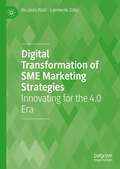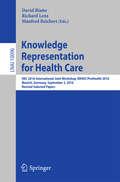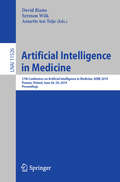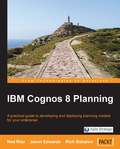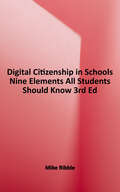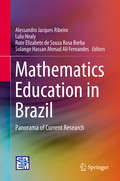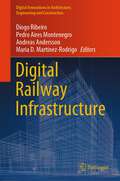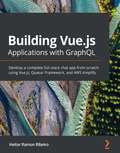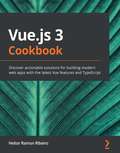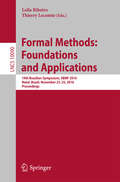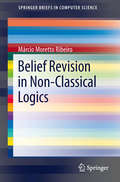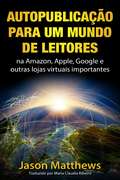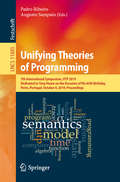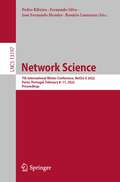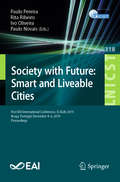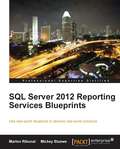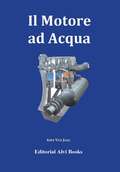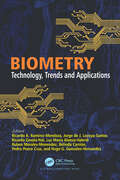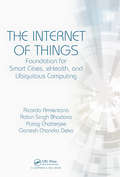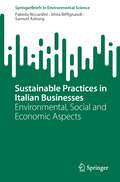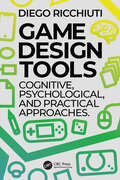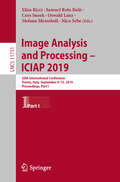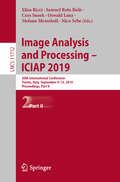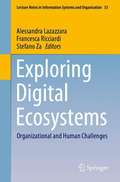- Table View
- List View
Digital Transformation of SME Marketing Strategies: Innovating for the 4.0 Era
by Riccardo Rialti Lamberto ZolloSMEs represent more than 95% of businesses operating in global markets. These businesses are the fabric of any economic system both in developed and emerging countries, and are the main constituents of any global supply chain throughout the world. However, research on new 4.0 marketing strategies for this kind of businesses has been largely neglected. Extant literature mostly neglects, or fails to articulate the importance of emerging technology such as Big Data, Artificial Intelligence and VR/AR for SMEs. Building on that, this book reviews existing literature on innovation and new technology in marketing for SMEs, what they could do and should avoid. Then, presenting multiple case study from SMEs operating in diverse industries (fashion and design, food and wine, financial services), it develops a practical strategic framework that could be used by SMEs wishing to effectively innovate their marketing strategies in our contemporary digital era. It will be an essential resource for students and researchers of marketing, innovation and industry 4.0.
Knowledge Representation for Health Care
by David Riaño Richard Lenz Manfred ReichertThis book constitutes the thoroughly refereedpost-workshop proceedings of two workshops held at the International Conferenceon Artificial Intelligence in Medicine, AIME 2015, held in Pavia, Italy, inJune 2015: the 7th International Workshop on Knowledge Representation forHealth Care, KR4HC 2015, and the 8th International Workshop on Process-orientedInformation Systems in Healthcare, ProHealth 2015. The 10 revised full papers were carefullyreviewed and selected from 26 submissions. The papers are organized in topicalsections on knowledge-driven health IT and simulation, clinical guideline andclinical pathway support, mobile process and decision support, and healthinformation systems and clinical data.
Artificial Intelligence in Medicine: 17th Conference on Artificial Intelligence in Medicine, AIME 2019, Poznan, Poland, June 26–29, 2019, Proceedings (Lecture Notes in Computer Science #11526)
by David Riaño Annette Ten Teije Szymon WilkThis book constitutes the refereed proceedings of the 17th Conference on Artificial Intelligence in Medicine, AIME 2019, held in Poznan, Poland, in June 2019. The 22 revised full and 31 short papers presented were carefully reviewed and selected from 134 submissions. The papers are organized in the following topical sections: deep learning; simulation; knowledge representation; probabilistic models; behavior monitoring; clustering, natural language processing, and decision support; feature selection; image processing; general machine learning; and unsupervised learning.
IBM Cognos 8 Planning
by Ned Riaz Jason EdwardsThis is a step-by-step, practical guide to designing, building, and deploying Planning models, with plenty of advice from three of the most seasoned Cognos Planning consultants having over 25 years of real-world, in-the-trench experience. We remove the technical clutter and jump right to the heart of the subject focusing only on what is important. Written for first-time developers wanting an introduction to IBM Cognos Planning, this book gives clear, easy-to-understand instructions on how to design, build, and deploy Planning models focusing only on the essential tools that you need to know. It is for anyone who wants to understand IBM Cognos Planning and make a transition to this tool from elsewhere.
Digital Citizenship in Schools: Nine Elements Students Should Know
by Mike RibbleDigital Citizenship in Schools, third Edition is an essential introduction to digital citizenship. Starting with a basic definition of the concept and an explanation of its relevance and importance, author Mike Ribble goes on to explore the nine elements of digital citizenship. He provides useful audit and professional development activities to help educators determine how to go about integrating digital citizenship concepts into the classroom. Activity ideas and lesson plans round out this timely book.
Mathematics Education in Brazil: Panorama of Current Research
by Alessandro Jacques Ribeiro Lulu Healy Rute Elizabete Borba Solange Hassan FernandesThis book presents, for the first time in English, the state of the art of Mathematics Education research in Brazil, a country that has the strongest community in this field in Latin America. Edited by leading researchers in the area, the volume provides the international academic community a summary of the scientific production of the thirteen working groups of the Brazilian Society of Mathematics Education (SBEM), the national scientific society that brings together researchers, teachers, students and other professionals of the area. These working groups meet every three years at the International Seminar of Mathematics Education (SIPEM) and cover the following topics: Mathematics Education in the Early Years and Primary Education (Y1-Y5); Mathematics Education in the Middle School (Y6-Y9); Mathematics Education in the High School (Y10-Y12); Mathematics Education at the University level; History of Mathematics, Culture and Mathematics Education; Digital Technologies and Distance Education; Teacher Education; Assessment and Mathematics Education; Cognitive and Linguistic Processes in Mathematics Education; Mathematical Modeling; Philosophy of Mathematics Education, Teaching Probability and Statistics; and Difference, Inclusion and Mathematics Education. Each chapter of the book presents an overview of the production of a working group and they are all preceded by an introduction by professor Ubiratan D’Ambrosio, one of the pioneers of Mathematics Education in Brazil.
Digital Railway Infrastructure (Digital Innovations in Architecture, Engineering and Construction)
by Diogo Ribeiro Pedro Aires Montenegro Andreas Andersson Maria D. Martínez-RodrigoThis book describes the most recent strategies for the digitalization of railway sector that bring new challenges for the construction, operation, and maintenance of railway infrastructures. These strategies involve the development and application of new technologies and methodologies to enhance the sustainability and resilience of railway infrastructures particularly under extreme climate and operational events. In particular, the digital transformation involves the use of digital twins, augmented and virtual reality, forecast capabilities, risk and life-cycle analysis, cybersecurity, unmanned technologies for monitoring and inspection, computer vision, AI, risk and disaster management, among others. Presently, the literature is lacking a contribution that provides general and foundational knowledge across these and other topics. Therefore, this book provides valuable information for researchers, students, and professionals in railway engineering that want to develop their knowledge and skills in this field.
Building Vue.js Applications with GraphQL: Develop a complete full-stack chat app from scratch using Vue.js, Quasar Framework, and AWS Amplify
by Heitor Ramon RibeiroTake your Vue.js knowledge to the next level by understanding full-stack development concepts and exploring modern web technologies such as AWS Amplify, GraphQL, and Quasar FrameworkKey FeaturesBuild a fully functional Vue.js web app and learn how it integrates with GraphQLTransform your chat application into a Progressive Web Application (PWA) for web deploymentDiscover practical recipes, exploring the capabilities of the GraphQL API for full-stack development using Quasar FrameworkBook DescriptionSince its release by Facebook in 2012, GraphQL has taken the internet by storm. Huge companies such as Airbnb and Audi have started to adopt it, while small to medium-sized companies are now recognizing the potential of this query-based API. GraphQL may seem strange at first, but as you start to read about and experience more of it, you won't want to use REST APIs anymore. With the recipes in this book, you will learn how to build a complete real-time chat app from scratch. Starting by creating an AWS Amplify environment, you will delve into developing your first GraphQL Schema. You will then learn how to add the AppSync GraphQL client and create your first GraphQL mutation. The book also helps you to discover the simplicity and data fetching capabilities of GraphQL that make it easy for front-end developers to communicate with the server. You will later understand how to use Quasar Framework to create application components and layouts. Finally, you will find out how to create Vuex modules in your application to manage the app state, fetch data using the GraphQL client, and deploy your application to the web. By the end of this book, you'll be well versed in proof-of-concept full-stack applications that explore the power of GraphQL with AWS Amplify, and you'll be able to use Quasar Framework to create your Vue applications.What you will learnSet up your Vue.js projects with Vue CLI and explore the power of Vue componentsDiscover steps to create functional components in Vue.js for faster renderingBecome familiar with AWS Amplify and learn how to set up your environmentUnderstand how to create your first GraphQL schemaUse Quasar Framework to create simple and effective interfacesDiscover effective techniques to create queries for interacting with dataExplore Vuex for adding state management capabilities to your appDiscover techniques to deploy your applications effectively to the webWho this book is forThis book is for intermediate-level Vue.js developers who want to take their first step toward full-stack development. Prior knowledge of Vue.js and JavaScript is required before getting started with this book.
Vue.js 3 Cookbook: Discover actionable solutions for building modern web apps with the latest Vue features and TypeScript
by Heitor Ramon RibeiroExplore the new features of Vue.js 3 and discover best practices for building fault-tolerant and professional frontend web applications Key Features Migrate your apps from Vue.js 2 to Vue.js 3 with the help of practical recipes Explore the latest Vue.js 3 features such as reactivity API, composition API, and TypeScript support Extend the capabilities and performance of Vue.js apps with Quasar, Vuetify, and Nuxt.js frameworks Book Description Vue.js is a progressive web framework for building professional user interfaces for your web applications. With Vue.js 3, the frontend framework is reinforced with architectural enhancements, new base languages, new render processes, and separated core components. The book starts with recipes for implementing Vue.js 3's new features in your web development projects and migrating your existing Vue.js apps to the latest version. You will get up and running with TypeScript with Vue.js and find succinct solutions to common challenges and pitfalls faced in implementing components, derivatives, and animation, through to building plugins, adding state management, routing, and developing complete single-page applications (SPAs). As you advance, you'll discover recipes to help you integrate Vue.js apps with Nuxt.js in order to add server-side rendering capabilities to your SPAs. You'll then learn about the Vue.js ecosystem by exploring modern frameworks such as Quasar, Nuxt.js, Vuex, and Vuetify in your web projects. Finally, the book provides you with solutions for packaging and deploying your Vue.js apps. By the end of this Vue.js book, you'll be able to identify and solve challenges faced in building Vue.js applications and be able to adopt the Vue.js framework for frontend web projects of any scale. What you will learn Design and develop large-scale web applications using Vue.js 3's latest features Create impressive UI layouts and pages using Vuetify, Buefy, and Ant Design Extend your Vue.js applications with dynamic form and custom rules validation Add state management, routing, and navigation to your web apps Extend Vue.js apps to the server-side with Nuxt.js Discover effective techniques to deploy your web applications with Netlify Develop web applications, mobile applications, and desktop applications with a single code base using the Quasar framework Who this book is for The book is for both new and experienced Vue.js developers looking to overcome challenges in building dynamic web applications with Vue 3. Knowledge of JavaScript and a basic understanding of Vue.js will help you to make the most of this book.
Formal Methods: Foundations and Applications
by Leila Ribeiro Thierry LecomteThis book constitutes the refereed proceedings of the 19th Brazilian Symposium on Formal Methods, SBMF 2016, which took place in Natal, Brazil, in November 2016. The 12 papers presented together with two invited talks were carefully reviewed and selected from 22 submissions. They are organized in the following topical sections: analysis and verification; modeling and logic; and model checking.
Belief Revision in Non-Classical Logics (SpringerBriefs in Computer Science)
by Márcio Moretto RibeiroSince the advent of the Semantic Web, interest in the dynamics of ontologies (ontology evolution) has grown significantly. Belief revision presents a good theoretical framework for dealing with this problem; however, classical belief revision is not well suited for logics such as Description Logics. Belief Revision in Non-Classical Logics presents a framework which can be applied to a wide class of logics that include - besides most Description Logics such as the ones behind OWL - Horn Logic and Intuitionistic logic, amongst others. The author also presents algorithms for the most important constructions in belief bases. Researchers and practitioners in theoretical computing will find this an invaluable resource.
Autopublicação para um mundo de Leitores
by Maria Claudia Ribeiro Jason MatthewsEconomize tempo e dinheiro comprando na Amazon, Apple e outras principais lojas virtuais com este guia de autopublicação fácil de seguir. Você já escreveu um livro? Quer vender na Amazon, Apple, Google e outras lojas virtuais importantes? Obtenha respostas objetivas de como se preparar para fazer o upload do seu livro para as lojas virtuais. O guia inclui dezenas de dicas para seu livro obter vantagens sobre milhões de outros. Escrito por Jason Matthews, especialista em autopublicação e autor de inúmeros títulos de ficção e não ficção. Os livros do autor têm sido traduzidos em oito línguas, e seus cursos em vídeos são vistos por alunos em mais de 124 países. Prepare-se para atingir os objetivos da autopublicação mais rápido. Você aprenderá a: •formatar seu livro para as principais lojas virtuais; •convertê-lo para ePub para poder ter boa visualização em tablets, celulares e Kindles; •fazer design de capas atrativo; •vender na Amazon, Apple, Google Play, Barnes & Noble, Smashwords, Kobo e outras lojas; •usar mídias sociais sabiamente (Facebook, Twitter, Google Plus, YouTube); •blogar e construir sua plataforma de autor; •obter revisões e achar soluções para suas necessidades com edição, direitos autorais, ISBN e outras exigências. E mais, você obtém opiniões para as melhores estratégias quando trabalha com profissionais. Os leitores do mundo inteiro estão ansiosos por livros novos. Pronto para compartilhar os seus livros? Comece hoje!
Unifying Theories of Programming: 7th International Symposium, UTP 2019, Dedicated to Tony Hoare on the Occasion of His 85th Birthday, Porto, Portugal, October 8, 2019, Proceedings (Lecture Notes in Computer Science #11885)
by Pedro Ribeiro Augusto SampaioThis volume contains papers presented at UTP 2019, the 7th International Symposium on Unifying Theories of Programming, held in Porto, Portugal, on the 8th of October 2019. This edition of the UTP symposium is in honor of Sir Tony Hoare, on the occasion of his 85th birthday. The papers contained in this volume were invited, and friendly refereed, original contributions sought from the UTP community. One of the papers is from the distinguished invited speaker Tony Hoare himself. Nine other additional papers compose this volume, covering several aspects of Unifying Theories of Programming.
Network Science: 7th International Winter Conference, NetSci-X 2022, Porto, Portugal, February 8–11, 2022, Proceedings (Lecture Notes in Computer Science #13197)
by Pedro Ribeiro Fernando Silva José Fernando Mendes Rosário LaureanoThis book constitutes the refereed proceedings of the 7th International Conference and School of Network Science, NetSci-X 2022, held in Porto, Portugal, in February 2021. The 13 full papers were carefully reviewed and selected from 19 submissions. The papers deal with the study of network models in domains ranging from biology and physics to computer science, from financial markets to cultural integration, and from social media to infectious diseases.
Society with Future: First EAI International Conference, SC4Life 2019, Braga, Portugal, December 4-6, 2019, Proceedings (Lecture Notes of the Institute for Computer Sciences, Social Informatics and Telecommunications Engineering #318)
by Rita Ribeiro Paulo Novais Paulo Pereira Ivo OliveiraThis book constitutes the refereed post-conference proceedings of the First International Conference on Society with Future: Smart and Liveable Cities, SC4Life 2019, which took place in Braga, Portugal, in December 2019. The 13 revised full papers were carefully reviewed and selected from 19 submissions. The conference has brought researchers, developers, and practitioners who are leveraging and develoing new knowledge on the topic of smart cities, offering more efficiency to main infrastructures, utilities and services, creating a sustainable urban environment that improves the quality of life for its citizens and enhances economic development.
SQL Server 2012 Reporting Services Blueprints
by Marlon Ribunal Mickey StueweFollow the fictional John Kirkland through a series of real-world reporting challenges based on actual business conditions. Use his detailed blueprints to develop your own reports for every requirement.This book is for report developers, data analysts, and database administrators struggling to master the complex world of effective reporting in SQL Server 2012. Knowledge of how data sources and data sets work will greatly help readers to speed through the tutorials.
Il motore ad acqua
by Maria Antonietta Ricagno Ares Van JaagIl motore ad acqua è un’invenzione che sfortunatamente è stata “inventata” molte volte. L'idrogeno proveniente dall'acqua è molto abbondante, è rinnovabile e può essere utilizzato sia nei Paesi con scarse risorse energetiche sia in quelli che ne dispongono in abbondanza. Il petrolio crudo e il gas naturale sono invece risorse energetiche limitate. Ma sono molte le persone che pensano che determinate tecnologie promettenti siano state soppresse da vari poteri politici o economici, generalmente allo scopo di proteggere i loro investimenti e interessi e, ai livelli più estremi e assurdi dell'illogicità cospiroparanoica, per motivazioni sinistre di portata ancora maggiore. In questa nuova opera, il versatile compositore e scrittore Van Jaag ci accompagna in un appassionante viaggio attraverso la storia di questa invenzione sconosciuta e dei suoi denigrati inventori.
Biometry: Technology, Trends and Applications
by Ricardo A. Ramirez-Mendoza, Jorge de J. Lozoya-Santos, Ricardo Zavala-Yoé, Luz María Alonso-Valerdi, Ruben Morales-Menendez, Belinda Carrión, Pedro Ponce Cruz and Hugo G. Gonzalez-HernandezBiometrics provide quantitative representations of human features, physiological and behavioral. This book is a compilation of biometric technologies developed by various research groups in Tecnologico de Monterrey, Mexico. It provides a summary of biometric systems as a whole, explaining the principles behind physiological and behavioral biometrics and exploring different types of commercial and experimental technologies and current and future applications in the fields of security, military, criminology, healthcare education, business, and marketing. Examples of biometric systems using brain signals or electroencephalography (EEG) are given. Mobile and home EEG use in children’s natural environments is covered. At the same time, some examples focus on the relevance of such technology in monitoring epileptic encephalopathies in children. Using reliable physiological signal acquisition techniques, functional Human Machine Interfaces (HMI) and Brain-Computer Interfaces (BCI) become possible. This is the case of an HMI used for assistive navigation systems, controlled via voice commands, head, and eye movements. A detailed description of the BCI framework is presented, and applications of user-centered BCIs, oriented towards rehabilitation, human performance, and treatment monitoring are explored. Massive data acquisition also plays an essential role in the evolution of biometric systems. Machine learning, deep learning, and Artificial Intelligence (AI) are crucial allies here. They allow the construction of models that can aid in early diagnosis, seizure detection, and data-centered medical decisions. Such techniques will eventually lead to a more concise understanding of humans.
The Internet of Things: Foundation for Smart Cities, eHealth, and Ubiquitous Computing (Advances In Information Security, Privacy, And Ethics Ser.)
by Ricardo Armentano, Robin Singh Bhadoria, Parag Chatterjee and Ganesh Chandra DekaThis book provides a dual perspective on the Internet of Things and ubiquitous computing, along with their applications in healthcare and smart cities. It also covers other interdisciplinary aspects of the Internet of Things like big data, embedded Systems and wireless Sensor Networks. Detailed coverage of the underlying architecture, framework, and state-of the art methodologies form the core of the book.
Sustainable Practices in Italian Businesses: Environmental, Social and Economic Aspects (SpringerBriefs in Environmental Science)
by Fabiola Riccardini Silvia Biffignandi Samuel AshongThis SpringerBrief describes the development and use of a synthetic indicator to assess different degrees of sustainability adoption by economic sector and businesses size. To make this analysis a theoretical framework which involves variables common to alternative frameworks (specifically ESG, GRI and Istat) is proposed. The empirical analysis focuses on the environmental, social and economic variables of the Italian businesses. In this analysis, all three pillars of sustainability – economic, environmental, and social – are considered. The work begins with a review of business sustainability literature and a look into institutional frameworks for the development and measurement of the phenomena. Connections between businesses and the SDGs are examined and comparison of the classifications of sustainable activities defined by GRI and ESG international standards is used to define a framework to be adopted to analyse ISTAT Business Census. Selected indicator variables are aggregated with a synthetic indicator and the results are presented (this is a new proposal of a synthetic indicator useful for the type of data used and published by ISTAT – Italian National Statistical Institute), discussing pros and cons of using it. This study provides two important innovative contributions. The first one is about how to approach the theoretical framework of businesses sustainability at firms aggregated level. The basic idea to work on a set of variables common to different approaches is interesting from the interpretative point of view. The second one, is about the specific empirical analysis, i.e. the Italian businesses sustainability situation. The investigation based on this new theoretical classification/framework and the new proposed indicator provides some interesting substantive results.
Game Design Tools: Cognitive, Psychological, and Practical Approaches
by Diego RicchiutiThis book provides a series of transdisciplinary tools to help game designers improve their design pipeline and design output. Using approaches from psychology, anthropology, and sociology, it offers practical tools for all the main aspects of game design from conception through to testing. Drawing on game design theory, the book looks at the relationship between game design and other disciplines to create a toolbox of modern tools for game designers. It covers archetypes, praxeology, behavioural game design, and emotional game design. Covering a wide breadth of content, the book includes chapters on: Documentation Production Evaluation Analysis and Marketing tools This book will be of great interest to students on game design courses, as well as early-career game designers and those looking to break into the industry. It will also be of interest to more experienced game designers looking for new game design tools.
Image Analysis and Processing – ICIAP 2019: 20th International Conference, Trento, Italy, September 9–13, 2019, Proceedings, Part I (Lecture Notes in Computer Science #11751)
by Elisa Ricci Samuel Rota Bulò Cees Snoek Oswald Lanz Stefano Messelodi Nicu SebeThe two-volume set LNCS 11751 and 11752 constitutes the refereed proceedings of the 20th International Conference on Image Analysis and Processing, ICIAP 2019, held in Trento, Italy, in September 2019. The 117 papers presented were carefully reviewed and selected from 207 submissions. The papers cover both classic and the most recent trends in image processing, computer vision, and pattern recognition, addressing both theoretical and applicative aspects. They are organized in the following topical sections: Video Analysis and Understanding; Pattern Recognition and Machine Learning; Deep Learning; Multiview Geometry and 3D Computer Vision; Image Analysis, Detection and Recognition; Multimedia; Biomedical and Assistive Technology; Digital Forensics; Image processing for Cultural Heritage.
Image Analysis and Processing – ICIAP 2019: 20th International Conference, Trento, Italy, September 9–13, 2019, Proceedings, Part II (Lecture Notes in Computer Science #11752)
by Elisa Ricci Samuel Rota Bulò Cees Snoek Oswald Lanz Stefano Messelodi Nicu SebeThe two-volume set LNCS 11751 and 11752 constitutes the refereed proceedings of the 20th International Conference on Image Analysis and Processing, ICIAP 2019, held in Trento, Italy, in September 2019. The 117 papers presented were carefully reviewed and selected from 207 submissions. The papers cover both classic and the most recent trends in image processing, computer vision, and pattern recognition, addressing both theoretical and applicative aspects. They are organized in the following topical sections: Video Analysis and Understanding; Pattern Recognition and Machine Learning; Deep Learning; Multiview Geometry and 3D Computer Vision; Image Analysis, Detection and Recognition; Multimedia; Biomedical and Assistive Technology; Digital Forensics; Image processing for Cultural Heritage.
Recommender Systems Handbook
by Francesco Ricci Lior Rokach Bracha ShapiraThis third edition handbook describes in detail the classical methods as well as extensions and novel approaches that were more recently introduced within this field. It consists of five parts: general recommendation techniques, special recommendation techniques, value and impact of recommender systems, human computer interaction, and applications. The first part presents the most popular and fundamental techniques currently used for building recommender systems, such as collaborative filtering, semantic-based methods, recommender systems based on implicit feedback, neural networks and context-aware methods. The second part of this handbook introduces more advanced recommendation techniques, such as session-based recommender systems, adversarial machine learning for recommender systems, group recommendation techniques, reciprocal recommenders systems, natural language techniques for recommender systems and cross-domain approaches to recommender systems. The third part covers a wide perspective to the evaluation of recommender systems with papers on methods for evaluating recommender systems, their value and impact, the multi-stakeholder perspective of recommender systems, the analysis of the fairness, novelty and diversity in recommender systems. The fourth part contains a few chapters on the human computer dimension of recommender systems, with research on the role of explanation, the user personality and how to effectively support individual and group decision with recommender systems. The last part focusses on application in several important areas, such as, food, music, fashion and multimedia recommendation. This informative third edition handbook provides a comprehensive, yet concise and convenient reference source to recommender systems for researchers and advanced-level students focused on computer science and data science. Professionals working in data analytics that are using recommendation and personalization techniques will also find this handbook a useful tool.
Exploring Digital Ecosystems: Organizational and Human Challenges (Lecture Notes in Information Systems and Organisation #33)
by Francesca Ricciardi Stefano Za Alessandra LazazzaraThe recent surge of interest in digital ecosystems is not only transforming the business landscape, but also poses several human and organizational challenges. Due to the pervasive effects of the transformation on firms and societies alike, both scholars and practitioners are interested in understanding the key mechanisms behind digital ecosystems, their emergence and evolution. In order to disentangle such factors, this book presents a collection of research papers focusing on the relationship between technologies (e.g. digital platforms, AI, infrastructure) and behaviours (e.g. digital learning, knowledge sharing, decision-making). Moreover, it provides critical insights into how digital ecosystems can shape value creation and benefit various stakeholders. The plurality of perspectives offered makes the book particularly relevant for users, companies, scientists and governments. The content is based on a selection of the best papers – original double-blind peer-reviewed contributions – presented at the annual conference of the Italian chapter of the AIS, which took place in Pavia, Italy in October 2018.
